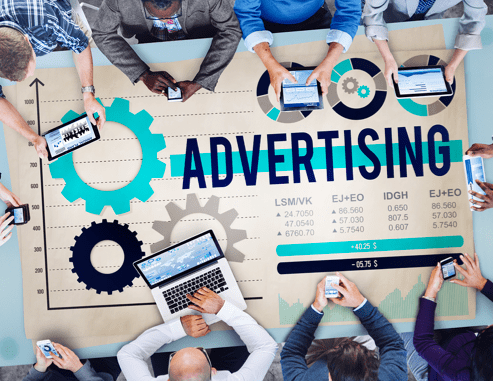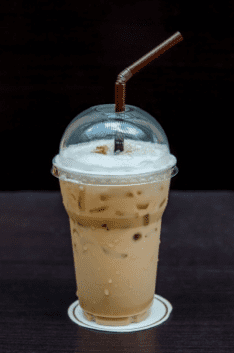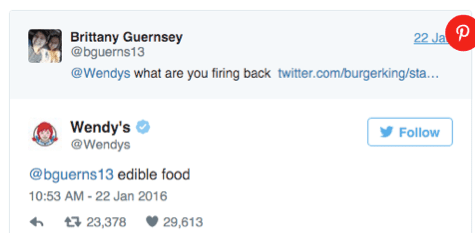What marketers can learn from Wendy's Vs Burger King, Dunkin Vs Starbucks and General Motors Vs Ford
Coke Vs. Pepsi, Wendy’s Vs. Burger King, Mac Vs. PC… What do these things have in common? They are examples of some intense rivalries between powerful brands. As long as advertising has existed, companies have engaged in fierce competition with one another, and they haven’t shied away from calling one another out. There are examples of this in print advertising, and television and radio commercials. Today, the fight has been taken to social media where brands are duking it out on platforms such as Twitter and Facebook. Keep reading to take a look at some of the most intensive advertising wars over the past decade or so, and get some insights into what marketing professionals can learn these intense rivalries.

Starbucks, McDonald's And Dunkin Donuts
The battle between these three brands is relatively new. It wasn’t until McDonald’s and Dunkin Donuts decided to push their way into the premium coffee market that Starbucks was even considered to be a competitor. Thus began the coffee wars.

Dunkin Donuts took the first step into the fray over a decade ago when they began offering various hot and iced coffee beverages to their consumers. Then, five years after that, McDonald’s stepped out onto the field with their own premium coffee items. When they did so, McDonald’s went after Starbucks with force.
Their competitive edge, they assumed, was their price point. After all, using conventional wisdom, wouldn’t you assume that lower prices would win over customers? It turns out that Starbuck’s sales and profits weren’t impacted at all. In fact, they rose, whilst it was a bit of a flop for McDonalds.
Insights
The result of this battle is that the one company who chose not to engage came out the winner. McDonald’s believed they could take business away from Starbucks simply because their prices were lower. They seriously underestimated the fact that they customers were willing to pay more for the Starbucks experience, and the decidedly different menu options. It also didn’t hurt that Starbuck’s has its content marketing fundamentals down. It’s a good idea to consider collateral damage before starting an advertising war.
Wendy’s And Burger King
Advertising wars between fast food brands are nothing new. Various fast food restaurants have used advertising to claim that their product is of higher quality than their competitions. The subject of these advertisements usually revolves around the issues of price, food quality, service, and portion size.
Because they have very similar menu items, the burger brands have been especially competitive with one another. The most interesting rivalry has played out online between Wendy’s and Burger King. The battle started over Burger King’s 5 for $4.00 offering and Wendy’s 4 for $4.00 special. Because Burger King’s special was announced after Wendy’s, many social media users saw this as an underhanded and passive aggressive move. Burger King then doubled down on Twitter by posting a picture of the items offered with the statement “5 for $4, because 5 is better than 4.”

A Twitter user posted a simple question directed at Wendy’s, “What are you firing back?” The response was brief, simple, and came almost immediately, “Edible food”. Two words, resulting in what is widely believed to be one of the sickest advertising burns so far this year.
Insights
Once upon a time, advertising wars were simply fought between brands. Now, fans can bet in on the action as well. This particular war also shows the value of being engaged, witty, and quick to respond. Marketers no longer have months to put together advertising campaigns in order to respond when competitors fire shots across their bow.
General Motors And Ford
The advertising wars between Ford and General Motors started in the first decade of the 20th century and are still going strong more than a century later. The two brands have gone after one another over price, features, safety, looks, and financing.
Within this intense war, some of the hardest fought battles have involved the two brands’ truck offerings. Each advertisement seems to tout one brand or the other as being more reliable, harder working, more powerful, and ultimately more American. This rivalry has even expanded to each brand’s fan base, as t-shirts, bumper stickers, and other memorabilia bashing and praising each brand have become extremely popular.
Today, this rivalry continues on and has expanded to the use of YouTube. In fact, GM recently went on the attack releasing a series of commercials featuring Howie Long that demonstrated the ability of GM trucks to fare better than Ford trucks in car accidents.
Insights
Many people viewed this particular series of advertisements as being a show of desperation on GM’s part. When rivalries are between brands this big, and product loyalty is already high, these battles are often more about exposure than they are off doing damage to the other player.
 Diana Beyer
Diana Beyer is experienced and self-driven media expert who is passionate about writing. Her purpose is to share values amid those interested. She is always seeking to discover new ways for personal and professional growth. Connect with Diana though
Twitter.










